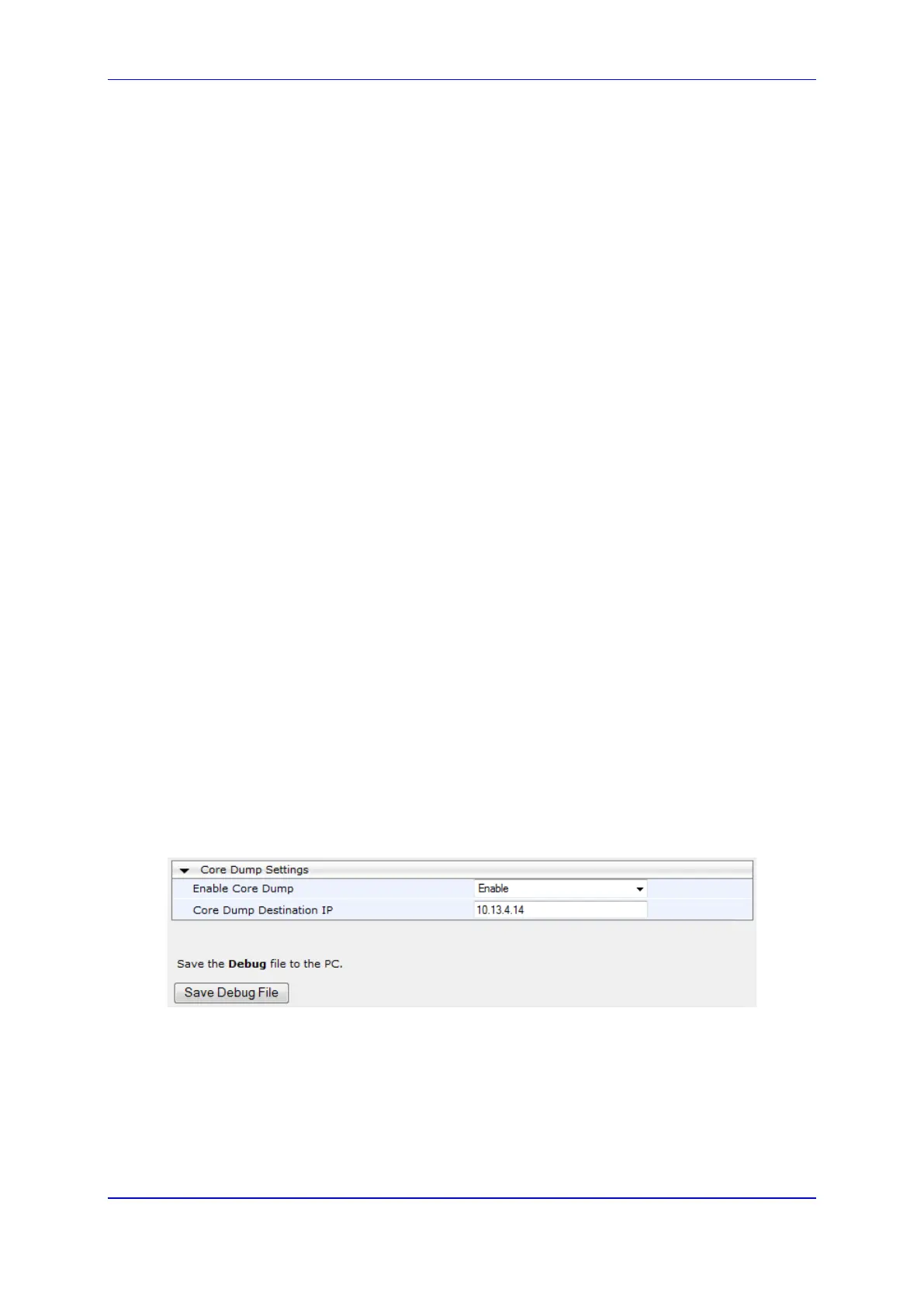Version 6.8 515 Mediant 2600 E-SBC
User's Manual 40. Creating Core Dump and Debug Files upon Device Crash
40 Creating Core Dump and Debug Files
upon Device Crash
For debugging purposes, you can create a core dump file and/or debug file. These files
may help you easily identify the cause of the crash. The core dump can either be included
in or excluded from the debug file, or alternatively, sent separately to a TFTP server. The
files can then be sent to AudioCodes support team for troubleshooting.
Core Dump File: You can enable the device to send a core dump file to a remote
destination upon a device crash. The core dump is a copy of the memory image at the
time of the crash. It provides a powerful tool for determining the root cause of the
crash. When enabled, the core dump file is sent to a user-defined TFTP server (IP
address). If no address is configured, the core dump file is saved to the device's flash
memory (if it has sufficient memory). The core dump file is saved as a binary file in the
following name format: "core_<device name>_ver_<firmware version>_mac_<MAC
address>_<date>_<time>", for example, core_acMediant_ver_680-8-
4_mac_00908F099096_1-11-2014_3-29-29.
Debug File: You can manually retrieve the debug file from the device and save it to a
folder on your local PC. The debug file contains the following information:
• Exception information, indicating the specific point in the code where the crash
occurred.
• Latest log messages that were recorded prior to the crash.
• Core dump (only if enabled, no IP address has been defined, and the device has
sufficient memory on its flash).
• May include additional application-proprietary debug information.
The debug file is saved as a zipped file in the following name format: "debug_<device
name>_ver_<firmware version>_mac_<MAC address>_<date>_<time>", for example,
debug_acMediant_ver_680-8-4_mac_00908F099096_1-11-2014_3-29-29.
The following procedure describes how to configure core dump file creation in the Web
interface.
To enable core dump creation:
1. Set up a TFTP server to where you want to send the core dump file.
2. Open the Debug Utilities page (Maintenance tab > Maintenance menu > Debug
Utilities).
Figure 40-1: Debug Utilities Page
3. From the 'Enable Core Dump' drop-down list, select Enable.
4. In the 'Core Dump Destination IP' field, enter an IP address of the remote server to
where you want the file to be sent (optional).
5. Click Submit, and then reset the device with a save-to-flash for your settings to take
effect.

